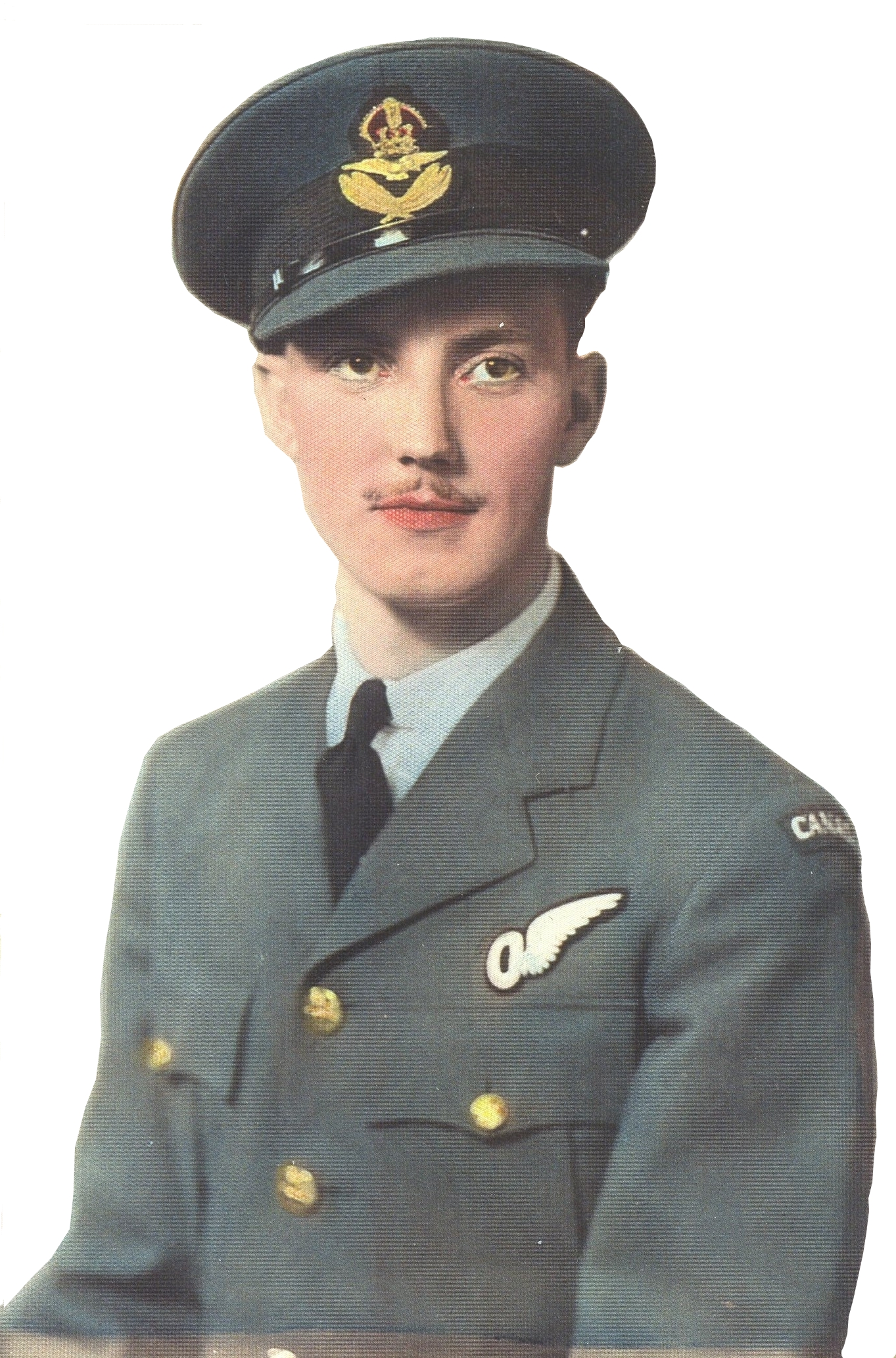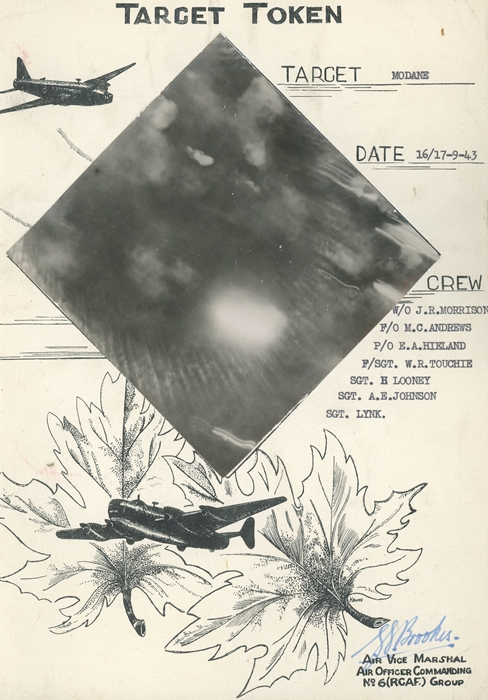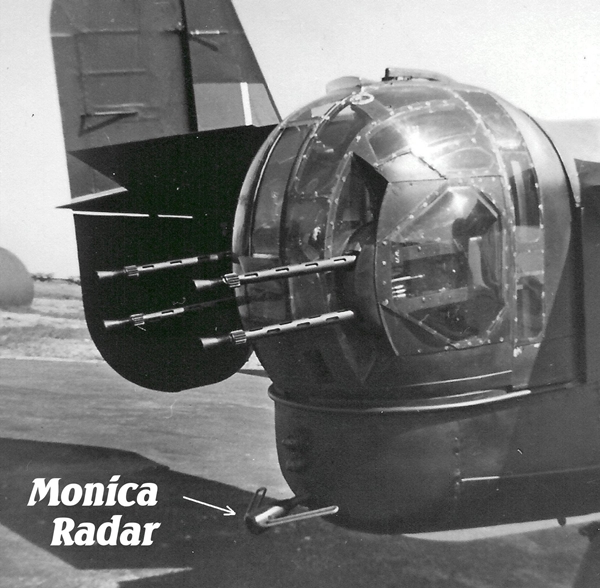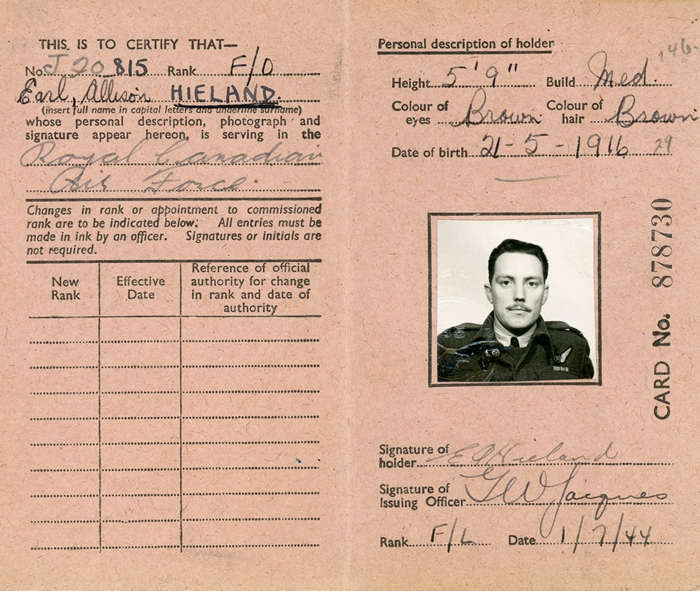An Airman's Career Begins
Earle Hieland who went by the nick name of Tom, was born in Halifax Nova Scotia in 1916. Halifax in 1916 was the scene of
huge explosion that
rocked and levelled much of Halifax. Tom and his family survived the ordeal and much later moved to Calgary and
later to Vancouver.
At the time of his enlistment he was married and older than most other volunteers. A situation which let to
him sometimes being referred to as "Dad" during his air force days.
Number 3 Air Observer School at Regina is the first documented point of Earle Hieland's aircrew training. From May
2nd. 1942 until June of 1942 he spent approximately 41 hours in training using the Anson. He also spent some time at
No.7 A.O.S Portage La Prairie Manitoba.
By September of 1942 he was posted to No.7 Bombing and Gunnery School at Paulson Manitoba. His course marks were
high especially those from the Navigation class where he scored 92.7%. These high marks earned him a commission,
he was now Pilot Officer Hieland.

Overseas and Crewing Up
Posted to No.23 Operational Training Unit at Pershore on February 1943, this would be the beginning of his
training in Britain. His logbook shows he flew Wellingtons with a number of pilots sometimes as Bomb Aimer sometimes as Air Gunner.
One particular pilot, WO Tripp, used him on each exercise as his Bomb Aimer, P/O Hieland was now a member of WO Tripp's crew.
As the Bomb Aimer for the WO Herbert Tripp he and the other members of the crew were sent off to No. 1659 Conversion Unit on May 1943.
It was here that the crew spent just 30 hours in total becoming familiar with the four engine heavy bomber the Halifax which would be
their aircraft type for the squadron they were to be assigned to.
419 Squadron and a Tragic Loss
Now as a member of 419 Squadron Hieland and his fellow crew members would squeeze in the normal squadron exercises, cross country
navigation flights, bombing run exercises. All this while their pilot WO Tripp awaited his turn to be a 2nd. Pilot
a training requirement where each new pilot would accompany an experienced crew on two sorties over enemy territory.
Tripp was assigned to F/O Boyce's crew on the night of June 11/12th just weeks after his arrival. Halifax JD143 Boyce's
aircraft was lost with Boyce, Tripp and WAG Sgt. Donald Chambers all being killed. The other five members of the
crew became POWs. Loss of Halifax JD143
Return to Conversion Unit and Re-crewing
With the death of WO Tripp, his crew including P/O Hieland returned to a C.U. this time it was No.1654 at Croft.
It is unknown if all of Tripp's crew stayed together or became part of the other crews with another pilots. It is known that
P/O Hieland was now crewed up with a very experienced pilot, WO Morrison who had already completed his first Tour of 30 sorties
and was now working his way through the second Tour.
Return to 419 Squadron
August 4th 1943 the Morrison crew arrives at Middleton St. George and becomes part of 419 Squadron.
The crew is :
WO J.B. Morrison Pilot
P/O C.M Andrews Navigator
P/O Earle Hieland Bomb Aimer
Sgt. W.R. Touchie WAG
Sgt. A.E. Johnson MU Gunner
Sgt. J.H. Lynk Rear Gunner
I have not been able as mentioned above confirm that this was the crew that had flow with WO Tripp. This crew would
take their Halifax VR-E, for most of their ops, to targets over Germany many times including four over Berlin and
one to Peenemunde the Nazi secret weapons testing site.
There is a family connection to JD466 VR-E for me. My father who was a Sergeant in ground crew operations
was in charge of this Halifax VR-E maintenance.

Not Always an Easy Journey
Mannheim September 23rd.
On P/O Hieland's eleventh operation, the target being Mannheim, at 22.02 hours at a position over the target Morrison's rear
gunner Sgt. Lynk observed an enemy aircraft identified as a FW190 fighter flying dead astern at 300 yards. At what appeared
to be the exact time he was noticed the FW190 began his attack.
Lynk called for a corkscrew to starboard manoeuvre to try to throw the night fighter
off his aim. The Luftwaffe pilot managed to follow JD466 through the dives and turns, only a burst of fire from Lynk
while the FW190 was making a climbing turn appeared to drive the fighter off the bombers tail.
The night fighter was lost to view and not seen again. The Luftwaffe pilot failed to fire on the Halifax
while Lynk managed to fire 150 rounds at the attacking fighter.
Frankfurt November 26th
As P/O Hieland had completed his duties as Bomb Aimer and his Halifax was leaving the target area the first
of four
attacks began.
At shortly after three in the morning rear gunner Sgt. Lynk spotted the silhouette of a night fighter against a
lighter coloured cloud in the night sky and identified as a Ju88.
The Monica device, used to warn of attacks from the rear had not detected the attacker.
The rear gunner called for a corkscrew to starboard. Then it is reported he called for a Resume Course, although the same report clearly states that
he saw the enemy fighter after breaking off to port, reposition itself beneath the Halifax.
By now Hieland and all
the other members of the crew who were able to, scanned the skies for additional attackers.
To thwart the Ju88 pilot's plans WO Morrison began a weaving motion to allow the crew to see more of the sky below them.
The Luftwaffe pilot throttled back his fighter and positioned it dead astern of VR-E. At this same time a second Ju88
came into view on the starboard quarter at only 150 yards off.
The first Ju88 now began his attack on the tail end of the bomber, at the range of 100 yards. Sgt. Lynk gave the
corkscrew to starboard order to his pilot. The rear gunner also opened up on the night fighter which was now only 50 yards off
and Lynk
saw tracer hit the enemy cockpit. The fighter broke off his attack diving down on the port side in what appeared to be
an uncontrolled manner. Lynk wanted to claim the fighter as a Probable, but more events were already in the works and he was unable to
follow what happened to that fighter.
As the first attacker was diving out of sight having been hit or driven off by the guns of the Halifax, the second
Ju88 now began its attack from the rear even though the heavy bomber was still in a corkscrew action. At 100 yards the
Luftwaffe pilot opened fire. What Hieland and the rest of the crew may not have known was that of the 4 gun barrels in the
rear turret only one was still useable.
Morrison kept up the corkscrew dives and turns with the enemy fighter behind him and following all his moves.
The Ju88
stopped firing at the bomber and eventually was lost from sight. And Hieland and the Halifax continued on their
course home.
At 03:42 the third attack started. VR-E was now at 19,500 feet and only flying at 165 mph. But the Halifax
was now defenceless from rear attacks, as all four barrels of the gun were jammed.
Hieland and the others scanned the night
sky for other enemy fighters knowing that the guns were jammed, Lynk worked frantically in the dark to un-jam them.
The third attacker was spotted at 350 yards off, Lynk called the bomber's captain for
another corkscrew action. The crew's only hope was to throw this third fighter off his aim.
The Mid-Upper
gunner was their only defensive fire power, a gun turret which could not fire at any fighter below them.
The evasive actions proved successful and the attacker had no opportunity to open fire before disappearing
into the clouds.
The fourth attack began at 03:52 while their bomber was now down to 19,000 feet and still flying at 165 mph. By now
Lynk had fully restored his four barrels to a useable status.
This fourth enemy
fighter (or fourth attack) was sighted off the starboard quarter dead astern at 400 yards and appeared to be using the bomber's slipstream.
The sky around VR-E had been lit up by flares dropped from a fighter, which suggests there was yet another enemy aircraft
somewhere above them.
 The Monica detection device had let them down each time. And now another corkscrew to starboard was successful
throwing the attacker of his aim.
As the Ju88 disappeared from view without firing any shots at the twisting diving bomber.
The Monica detection device had let them down each time. And now another corkscrew to starboard was successful
throwing the attacker of his aim.
As the Ju88 disappeared from view without firing any shots at the twisting diving bomber.
The duty of the other crew members during all these attacks was to scan the dark skies around the aircraft.
Hieland had an advantage in that his position in the aircraft afforded him a view forward, down to a certain
degree and both sides
on the forward quarters. If an attack was seen coming head on he would have used the front turret guns to ward off the attacker.
Another Re-Crewing and Other Squadrons
By December P/O Hieland was promoted to Flying Officer as had his pilot. F/O Morrison had also completed his second Tour
an unusual accomplishment. His first Tour had been in the Middle East and now he was posted to No. 1664 HCU.
For F/O Tom Hieland this meant yet another return to a Heavy Conversion Unit for re-crewing. Hielandís first return had been to No.1654, previously he
was at 1659 when he joined the Tripp crew and now he was off to 1659 again.
He was crewed up with S/L MacDonald in April and posted to 431 Squadron. In June of 1944 MacDonald had been promoted to
Wing Commander and was given Command of 432 Squadron. F/O Hieland stayed with McDonald to 432 Squadron.
By June of 1944 F/O Hieland had flown with three different captains and had also been a member of three different
squadrons. He completed 6 sorties while with 431 Squadron and four sorties while with 432. During 1943 he had also
taken training on the Link trainer, a ground based device to teach flying techniques.

He completed his service with the RCAF with the rank of Flight Lieutenant
Tom Earle Allison Hieland passed away in 2012 in Vernon British Columbia.


 The Monica detection device had let them down each time. And now another corkscrew to starboard was successful
throwing the attacker of his aim.
As the Ju88 disappeared from view without firing any shots at the twisting diving bomber.
The Monica detection device had let them down each time. And now another corkscrew to starboard was successful
throwing the attacker of his aim.
As the Ju88 disappeared from view without firing any shots at the twisting diving bomber.